- Home
- Ron Chernow
Alexander Hamilton Page 2
Alexander Hamilton Read online
Page 2
In the front parlor of the house she now shared with her daughter, Eliza Hamilton had crammed the faded memorabilia of her now distant marriage. When visitors called, the tiny, erect, white-haired lady would grab her cane, rise gamely from a black sofa embroidered with a floral pattern of her own design, and escort them to a Gilbert Stuart painting of George Washington. She motioned with pride to a silver wine cooler, tucked discreetly beneath the center table, that had been given to the Hamiltons by Washington himself. This treasured gift retained a secret meaning for Eliza, for it had been a tacit gesture of solidarity from Washington when her husband was ensnared in the first major sex scandal in American history. The tour’s highlight stood enshrined in the corner: a marble bust of her dead hero, carved by an Italian sculptor, Giuseppe Ceracchi, during Hamilton’s heyday as the first treasury secretary. Portrayed in the classical style of a noble Roman senator, a toga draped across one shoulder, Hamilton exuded a brisk energy and a massive intelligence in his wide brow, his face illumined by the half smile that often played about his features. This was how Eliza wished to recall him: ardent, hopeful, and eternally young. “That bust I can never forget,” one young visitor remembered, “for the old lady always paused before it in her tour of the rooms and, leaning on her cane, gazed and gazed, as if she could never be satisfied.”
For the select few, Eliza unearthed documents written by Hamilton that qualified as her sacred scripture: an early hymn he had composed or a letter he had drafted during his impoverished boyhood on St. Croix. She frequently grew melancholy and longed for a reunion with “her Hamilton,” as she invariably referred to him. “One night, I remember, she seemed sad and absent-minded and could not go to the parlor where there were visitors, but sat near the fire and played backgammon for a while,” said one caller. “When the game was done, she leaned back in her chair a long time with closed eyes, as if lost to all around her. There was a long silence, broken by the murmured words, ‘I am so tired. It is so long. I want to see Hamilton.’ ”1
Eliza Hamilton was committed to one holy quest above all others: to rescue her husband’s historical reputation from the gross slanders that had tarnished it. For many years after the duel, Thomas Jefferson, John Adams, and other political enemies had taken full advantage of their eloquence and longevity to spread defamatory anecdotes about Hamilton, who had been condemned to everlasting silence. Determined to preserve her husband’s legacy, Eliza enlisted as many as thirty assistants to sift through his tall stacks of papers. Unfortunately, she was so self-effacing and so reverential toward her husband that, though she salvaged every scrap of his writing, she apparently destroyed her own letters. The capstone of her monumental labor, her life’s “dearest object,” was the publication of a mammoth authorized biography that would secure Hamilton’s niche in the pantheon of the early republic. It was a long, exasperating wait as one biographer after another discarded the project or expired before its completion. Almost by default, the giant enterprise fell to her fourth son, John Church Hamilton, who belatedly disgorged a seven-volume history of his father’s exploits. Before this hagiographic tribute was completed, however, Eliza Hamilton died at ninety-seven on November 9, 1854.
Distraught that their mother had waited vainly for decades to see her husband’s life immortalized, Eliza Hamilton Holly scolded her brother for his overdue biography. “Lately in my hours of sadness, recurring to such interests as most deeply affected our blessed Mother ...I could recall none more frequent or more absorbent than her devotion to our Father. When blessed memory shows her gentle countenance and her untiring spirit before me, in this one great and beautiful aspiration after duty, I feel the same spark ignite and bid me...to seek the fulfillment of her words: ‘Justice shall be done to the memory of my Hamilton.’ ”2 It was, Eliza Hamilton Holly noted pointedly, the imperative duty that Eliza had bequeathed to all her children: Justice shall be done to the memory of my Hamilton.
Well, has justice been done? Few figures in American history have aroused such visceral love or loathing as Alexander Hamilton. To this day, he seems trapped in a crude historical cartoon that pits “Jeffersonian democracy” against “Hamiltonian aristocracy.” For Jefferson and his followers, wedded to their vision of an agrarian Eden, Hamilton was the American Mephistopheles, the proponent of such devilish contrivances as banks, factories, and stock exchanges. They demonized him as a slavish pawn of the British Crown, a closet monarchist, a Machiavellian intriguer, a would-be Caesar. Noah Webster contended that Hamilton’s “ambition, pride, and overbearing temper” had destined him “to be the evil genius of this country.”3 Hamilton’s powerful vision of American nationalism, with states subordinate to a strong central government and led by a vigorous executive branch, aroused fears of a reversion to royal British ways. His seeming solicitude for the rich caused critics to portray him as a snobbish tool of plutocrats who was contemptuous of the masses. For another group of naysayers, Hamilton’s unswerving faith in a professional military converted him into a potential despot. “From the first to the last words he wrote,” concluded historian Henry Adams, “I read always the same Napoleonic kind of adventuredom.”4 Even some Hamilton admirers have been unsettled by a faint tincture of something foreign in this West Indian transplant; Woodrow Wilson grudgingly praised Hamilton as “a very great man, but not a great American.”5
Yet many distinguished commentators have echoed Eliza Hamilton’s lament that justice has not been done to her Hamilton. He has tended to lack the glittering multivolumed biographies that have burnished the fame of other founders. The British statesman Lord Bryce singled out Hamilton as the one founding father who had not received his due from posterity. In The American Commonwealth, he observed, “One cannot note the disappearance of this brilliant figure, to Europeans the most interesting in the early history of the Republic, without the remark that his countrymen seem to have never, either in his lifetime or afterwards, duly recognized his splendid gifts.”6 During the robust era of Progressive Republicanism, marked by brawny nationalism and energetic government, Theodore Roosevelt took up the cudgels and declared Hamilton “the most brilliant American statesman who ever lived, possessing the loftiest and keenest intellect of his time.”7 His White House successor, William Howard Taft, likewise embraced Hamilton as “our greatest constructive statesman.”8 In all probability, Alexander Hamilton is the foremost political figure in American history who never attained the presidency, yet he probably had a much deeper and more lasting impact than many who did.
Hamilton was the supreme double threat among the founding fathers, at once thinker and doer, sparkling theoretician and masterful executive. He and James Madison were the prime movers behind the summoning of the Constitutional Convention and the chief authors of that classic gloss on the national charter, The Federalist, which Hamilton supervised. As the first treasury secretary and principal architect of the new government, Hamilton took constitutional principles and infused them with expansive life, turning abstractions into institutional realities. He had a pragmatic mind that minted comprehensive programs. In contriving the smoothly running machinery of a modern nation-state—including a budget system, a funded debt, a tax system, a central bank, a customs service, and a coast guard—and justifying them in some of America’s most influential state papers, he set a high-water mark for administrative competence that has never been equaled. If Jefferson provided the essential poetry of American political discourse, Hamilton established the prose of American statecraft. No other founder articulated such a clear and prescient vision of America’s future political, military, and economic strength or crafted such ingenious mechanisms to bind the nation together.
Hamilton’s crowded years as treasury secretary scarcely exhaust the epic story of his short life, which was stuffed with high drama. From his illegitimate birth on Nevis to his bloody downfall in Weehawken, Hamilton’s life was so tumultuous that only an audacious novelist could have dreamed it up. He embodied an enduring archetype: the obscure immigrant who c
omes to America, re-creates himself, and succeeds despite a lack of proper birth and breeding. The saga of his metamorphosis from an anguished clerk on St. Croix to the reigning presence in George Washington’s cabinet offers both a gripping personal story and a panoramic view of the formative years of the republic. Except for Washington, nobody stood closer to the center of American politics from 1776 to 1800 or cropped up at more turning points. More than anyone else, the omnipresent Hamilton galvanized, inspired, and scandalized the newborn nation, serving as the flash point for pent-up conflicts of class, geography, race, religion, and ideology. His contemporaries often seemed defined by how they reacted to the political gauntlets that he threw down repeatedly with such defiant panache.
Hamilton was an exuberant genius who performed at a fiendish pace and must have produced the maximum number of words that a human being can scratch out in forty-nine years. If promiscuous with his political opinions, however, he was famously reticent about his private life, especially his squalid Caribbean boyhood. No other founder had to grapple with such shame and misery, and his early years have remained wrapped in more mystery than those of any other major American statesman. While not scanting his vibrant intellectual life, I have tried to gather anecdotal material that will bring this cerebral man to life as both a public and a private figure. Charming and impetuous, romantic and witty, dashing and headstrong, Hamilton offers the biographer an irresistible psychological study. For all his superlative mental gifts, he was afflicted with a touchy ego that made him querulous and fatally combative. He never outgrew the stigma of his illegitimacy, and his exquisite tact often gave way to egregious failures of judgment that left even his keenest admirers aghast. If capable of numerous close friendships, he also entered into titanic feuds with Jefferson, Madison, Adams, Monroe, and Burr.
The magnitude of Hamilton’s feats as treasury secretary has overshadowed many other facets of his life: clerk, college student, youthful poet, essayist, artillery captain, wartime adjutant to Washington, battlefield hero, congressman, abolitionist, Bank of New York founder, state assemblyman, member of the Constitutional Convention and New York Ratifying Convention, orator, lawyer, polemicist, educator, patron saint of the New-York Evening Post, foreign-policy theorist, and major general in the army. Boldly uncompromising, he served as catalyst for the emergence of the first political parties and as the intellectual fountainhead for one of them, the Federalists. He was a pivotal force in four consecutive presidential elections and defined much of America’s political agenda during the Washington and Adams administrations, leaving copious commentary on virtually every salient issue of the day.
Earlier generations of biographers had to rely on only a meager portion of his voluminous output. Between 1961 and 1987, Harold C. Syrett and his doughty editorial team at Columbia University Press published twenty-seven thick volumes of Hamilton’s personal and political papers. Julius Goebel, Jr., and his staff added five volumes of legal and business papers to the groaning shelf, bringing the total haul to twenty-two thousand pages. These meticulous editions are much more than exhaustive compilations of Hamilton’s writings: they are a scholar’s feast, enriched with expert commentary as well as contemporary newspaper extracts, letters, and diary entries. No biographer has fully harvested these riches. I have supplemented this research with extensive archival work that has uncovered, among other things, nearly fifty previously undiscovered essays written by Hamilton himself. To retrieve his early life from its often impenetrable obscurity, I have also scoured records in Scotland, England, Denmark, and eight Caribbean islands, not to mention many domestic archives. The resulting portrait, I hope, will seem fresh and surprising even to those best versed in the literature of the period.
It is an auspicious time to reexamine the life of Hamilton, who was the prophet of the capitalist revolution in America. If Jefferson enunciated the more ample view of political democracy, Hamilton possessed the finer sense of economic opportunity. He was the messenger from a future that we now inhabit. We have left behind the rosy agrarian rhetoric and slaveholding reality of Jeffersonian democracy and reside in the bustling world of trade, industry, stock markets, and banks that Hamilton envisioned. (Hamilton’s staunch abolitionism formed an integral feature of this economic vision.) He has also emerged as the uncontested visionary in anticipating the shape and powers of the federal government. At a time when Jefferson and Madison celebrated legislative power as the purest expression of the popular will, Hamilton argued for a dynamic executive branch and an independent judiciary, along with a professional military, a central bank, and an advanced financial system. Today, we are indisputably the heirs to Hamilton’s America, and to repudiate his legacy is, in many ways, to repudiate the modern world.
ONE
THE CASTAWAYS
Alexander Hamilton claimed Nevis in the British West Indies as his birthplace, although no surviving records substantiate this. Today, the tiny island seems little more than a colorful speck in the Caribbean, an exotic
tourist hideaway. One million years ago, the land that is now Nevis Peak thrust up from the seafloor to form the island, and the extinct volcanic cone still intercepts the trade winds at an altitude of 3,200 feet, its jagged peak often obscured behind a thick swirl of clouds. This omnipresent mountain, looming over jungles, plunging gorges, and verdant foothills that sweep down to sandy beaches, made the island a natural fortress for the British. It abounded in both natural wonders and horrors: in 1690, the first capital, Jamestown, was swallowed whole by the sea during an earthquake and tidal wave.
To modern eyes, Nevis may seem like a sleepy backwater to which Hamilton was confined before his momentous escape to St. Croix and North America. But if we adjust our vision to eighteenth-century realities, we see that this West Indian setting was far from marginal, the crossroads of a bitter maritime rivalry among European powers vying for mastery of the lucrative sugar trade. A small revolution in consumer tastes had turned the Caribbean into prized acreage for growing sugarcane to sweeten the coffee, tea, and cocoa imbibed in fashionable European capitals. As a result, the small, scattered islands generated more wealth for Britain than all of her North American colonies combined. “The West Indians vastly outweigh us of the northern colonies,” Benjamin Franklin grumbled in the 1760s.1 After the French and Indian War, the British vacillated about whether to swap all of Canada for the island of Guadeloupe; in the event the French toasted their own diplomatic cunning in retaining the sugar island. The sudden popularity of sugar, dubbed “white gold,” engendered a brutal world of overnight fortunes in which slavery proved indispensable. Since indigenous Caribbeans and Europeans balked at toiling in the sweltering canebrakes, thousands of blacks were shipped from slave-trading forts in West Africa to cultivate Nevis and the neighboring islands.
British authorities colonized Nevis with vagabonds, criminals, and other riffraff swept from the London streets to work as indentured servants or overseers. In 1727, the minister of a local Anglican church, aching for some glimmer of spirituality, regretted that the slaves were inclined to “laziness, stealing, stubbornness, murmuring, treachery, lying, drunkenness and the like.” But he reserved his most scathing strictures for a rowdy white populace composed of “whole shiploads of pickpockets, whores, rogues, vagrants, thieves, sodomites, and other filth and cutthroats of society.”2 Trapped in this beautiful but godless spot, the minister bemoaned that the British imports “were not bad enough for the gallows and yet too bad to live among their virtuous countrymen at home.”3 While other founding fathers were reared in tidy New England villages or cosseted on baronial Virginia estates, Hamilton grew up in a tropical hellhole of dissipated whites and fractious slaves, all framed by a backdrop of luxuriant natural beauty.
On both his maternal and paternal sides, Hamilton’s family clung to the insecure middle rung of West Indian life, squeezed between plantation aristocrats above and street rabble and unruly slaves below. Taunted as a bastard throughout his life, Hamilton was understandably reluct
ant to chat about his childhood—“my birth is the subject of the most humiliating criticism,” he wrote in one pained confession— and he turned his early family history into a taboo topic, alluded to in only a couple of cryptic letters.4 He described his maternal grandfather, the physician John Faucette, as “a French Huguenot who emigrated to the West Indies in consequence of the revocation of the Edict of Nantes and settled in the island of Nevis and there acquired a pretty fortune. [Revoked in 1685 by Louis XIV, the Edict of Nantes had guaranteed religious toleration for French Protestants.] I have been assured by persons who knew him that he was a man of letters and much of a gentleman.”5 Born ten years after his grandfather’s death, Hamilton may have embellished the sketch with a touch of gentility. In the slave-based economy, physicians often attended the auctions, checking the teeth of the human chattel and making them run, leap, and jump to test whatever strength remained after the grueling middle passage. No white in the sugar islands was entirely exempt from the pervasive taint of slavery.
The archives of St. George’s Parish in the fertile, mountainous Gingerland section of Nevis record the marriage of John Faucette to a British woman, Mary Uppington, on August 21, 1718. By that point, they already had two children: a daughter, Ann, and a son, John, the latter arriving two months before the wedding. In all likelihood, lulled by the casual mores of the tropics, the Faucettes decided to formalize their link after the birth of their second child, having lived until then as a common-law couple—an expedient adopted by Hamilton’s own parents. In all, the Faucettes produced seven children, Hamilton’s mother, Rachel, being the second youngest, born circa 1729.

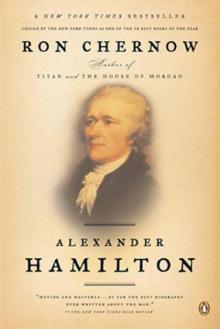 Alexander Hamilton
Alexander Hamilton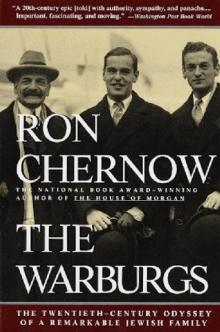 The Warburgs
The Warburgs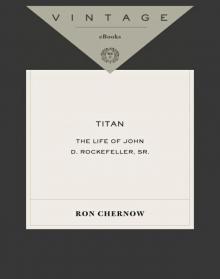 Titan
Titan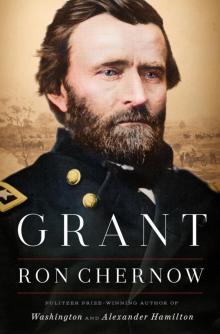 Grant
Grant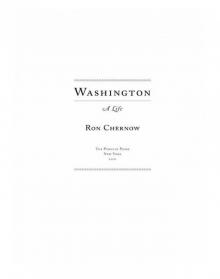 Washington
Washington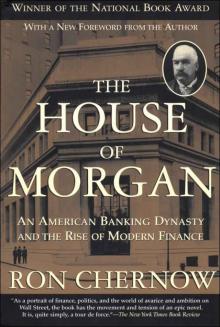 The House of Morgan
The House of Morgan The House of Morgan: An American Banking Dynasty and the Rise of Modern Finance
The House of Morgan: An American Banking Dynasty and the Rise of Modern Finance